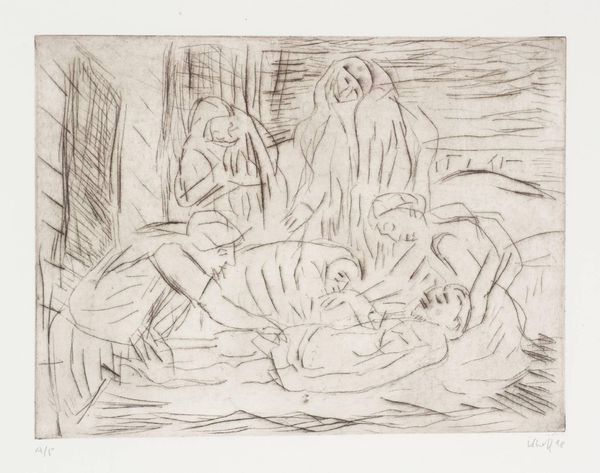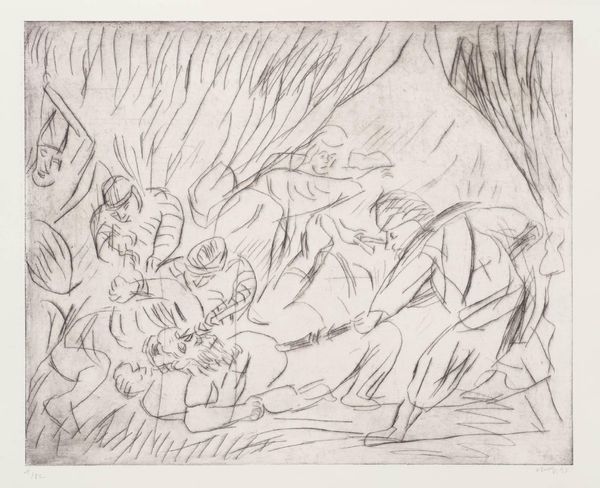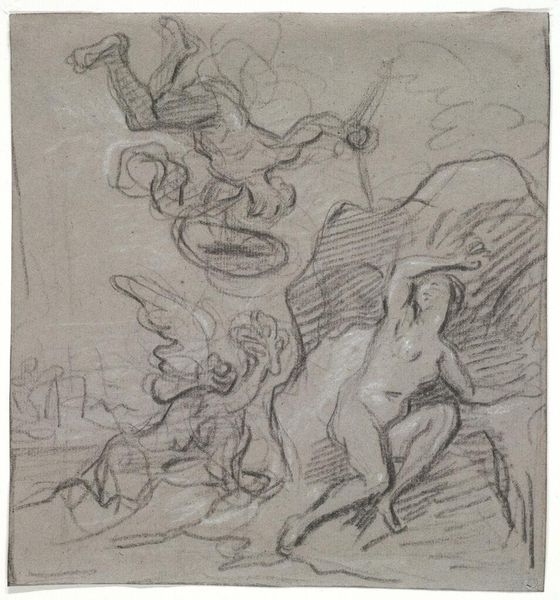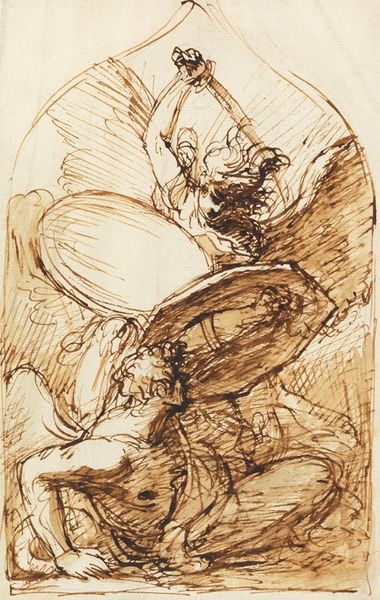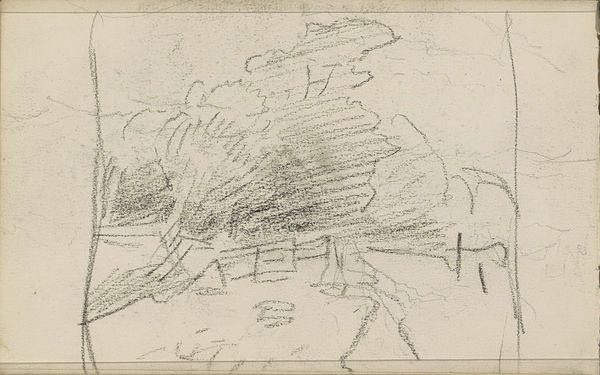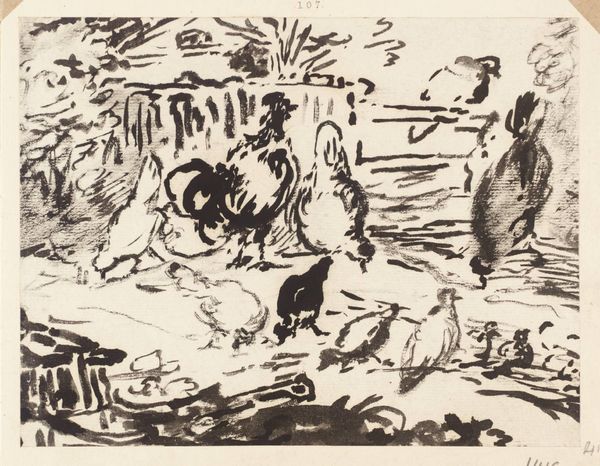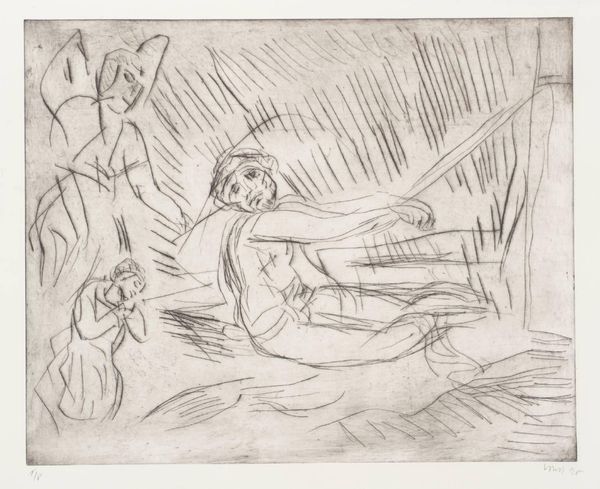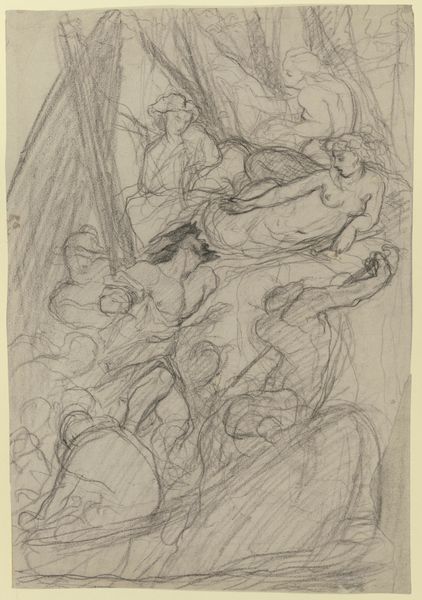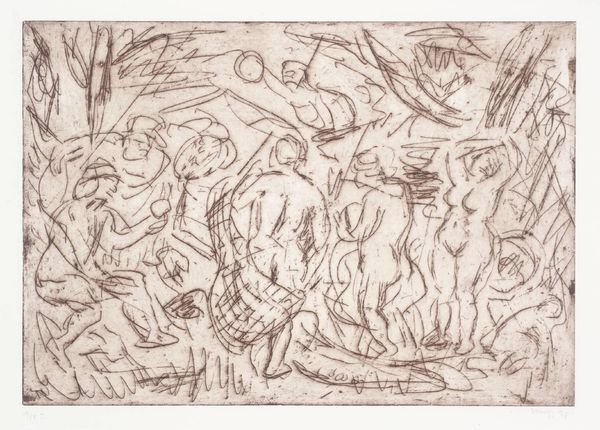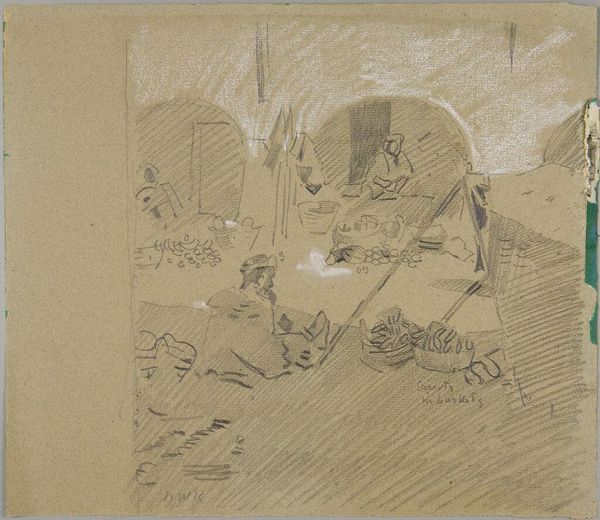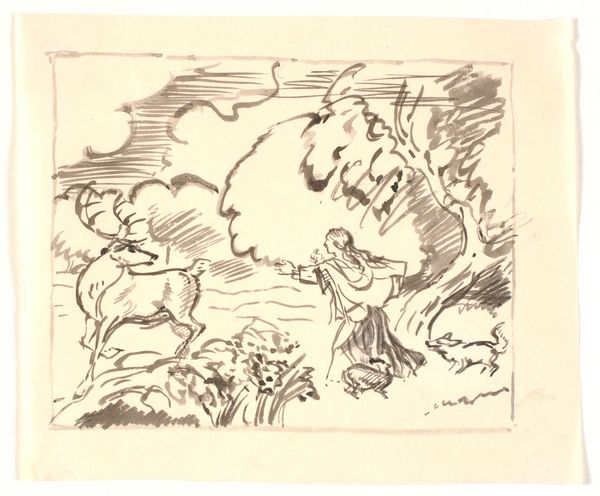
Copyright: © Leon Kossoff | CC-BY-NC-ND 4.0 DEED, Photo: Tate
Curator: Looking at this etching, "The Brazen Serpent (2)" by Leon Kossoff, part of the Tate Collection, what springs to mind? Editor: Chaos, frankly. A swirling vortex of lines and figures, a jumble of bodies in distress. Curator: Indeed. The Brazen Serpent is a potent symbol of healing through faith, a narrative drawn from the Old Testament. Here, Kossoff strips away any sense of divine intervention, leaving us with raw human suffering. Editor: The lack of clear form amplifies that. It's less about a specific historical moment and more about the timeless experience of collective pain and fear. It highlights how societies process trauma through visual narratives. Curator: A powerful observation. The serpent, typically a symbol of deception, becomes an ambiguous symbol of potential salvation, viewed through a modern lens of doubt and unease. The image leaves us suspended, unresolved. Editor: Absolutely, a perspective that highlights the power of art to reflect cultural anxieties and the ongoing struggle to find meaning in suffering.
Comments
tate 6 months ago
⋮
http://www.tate.org.uk/art/artworks/kossoff-the-brazen-serpent-2-p11711
Join the conversation
Join millions of artists and users on Artera today and experience the ultimate creative platform.
tate 6 months ago
⋮
This print is one of many etchings executed by Leon Kossoff in response to, and literally in the presence of, oil paintings by old masters; in this case The Brazen Serpent, 1635-40, by Peter Rubens (1577-1640), owned by the National Gallery, London. Tate owns three prints by Kossoff after this Rubens painting (Tate P11710-12). The artist’s ability to explore a number of separate responses while making drawings and prints from a single subject is illustrated in these etchings. This print was never published as an edition; Tate owns the second trial proof.

